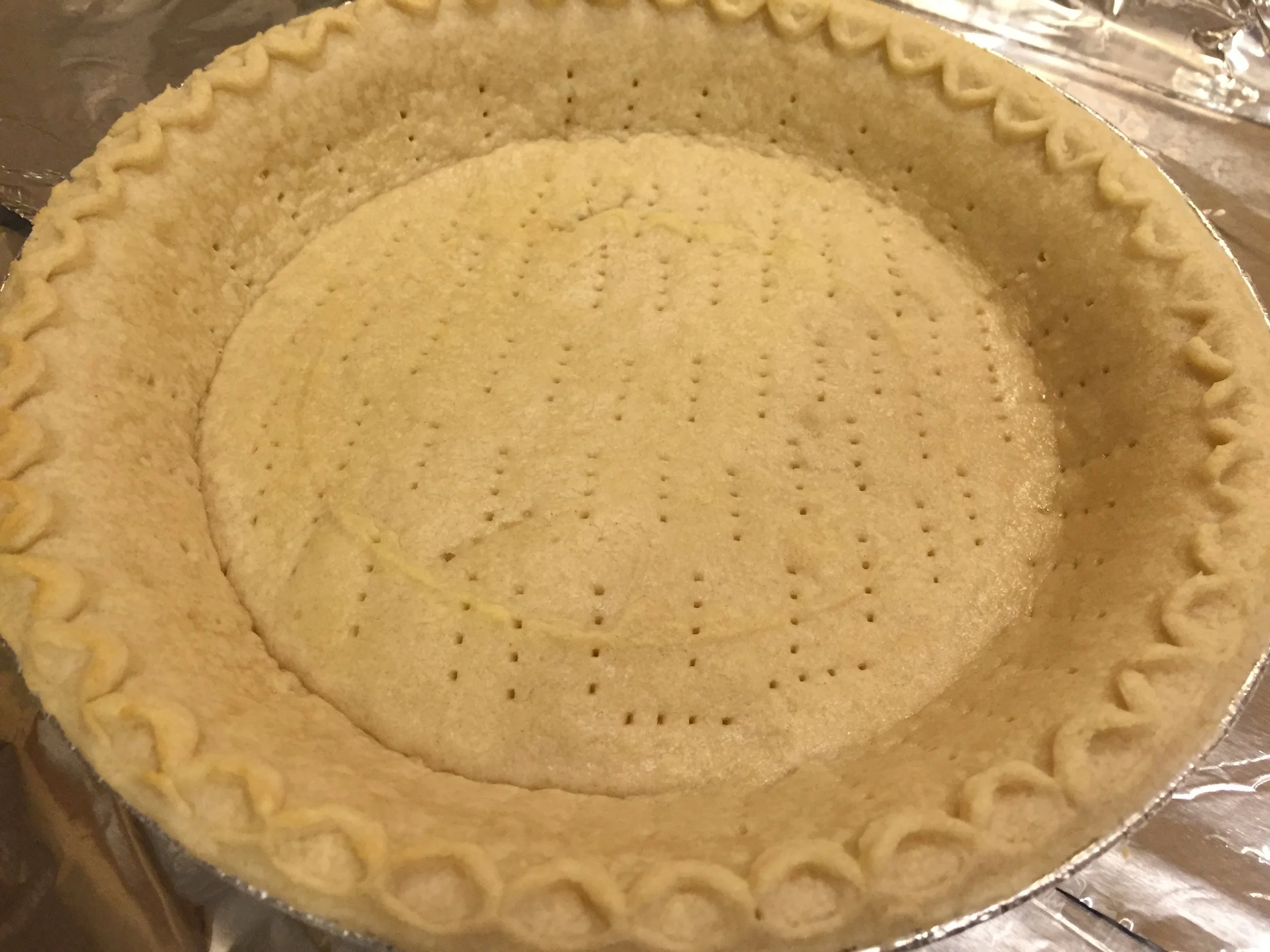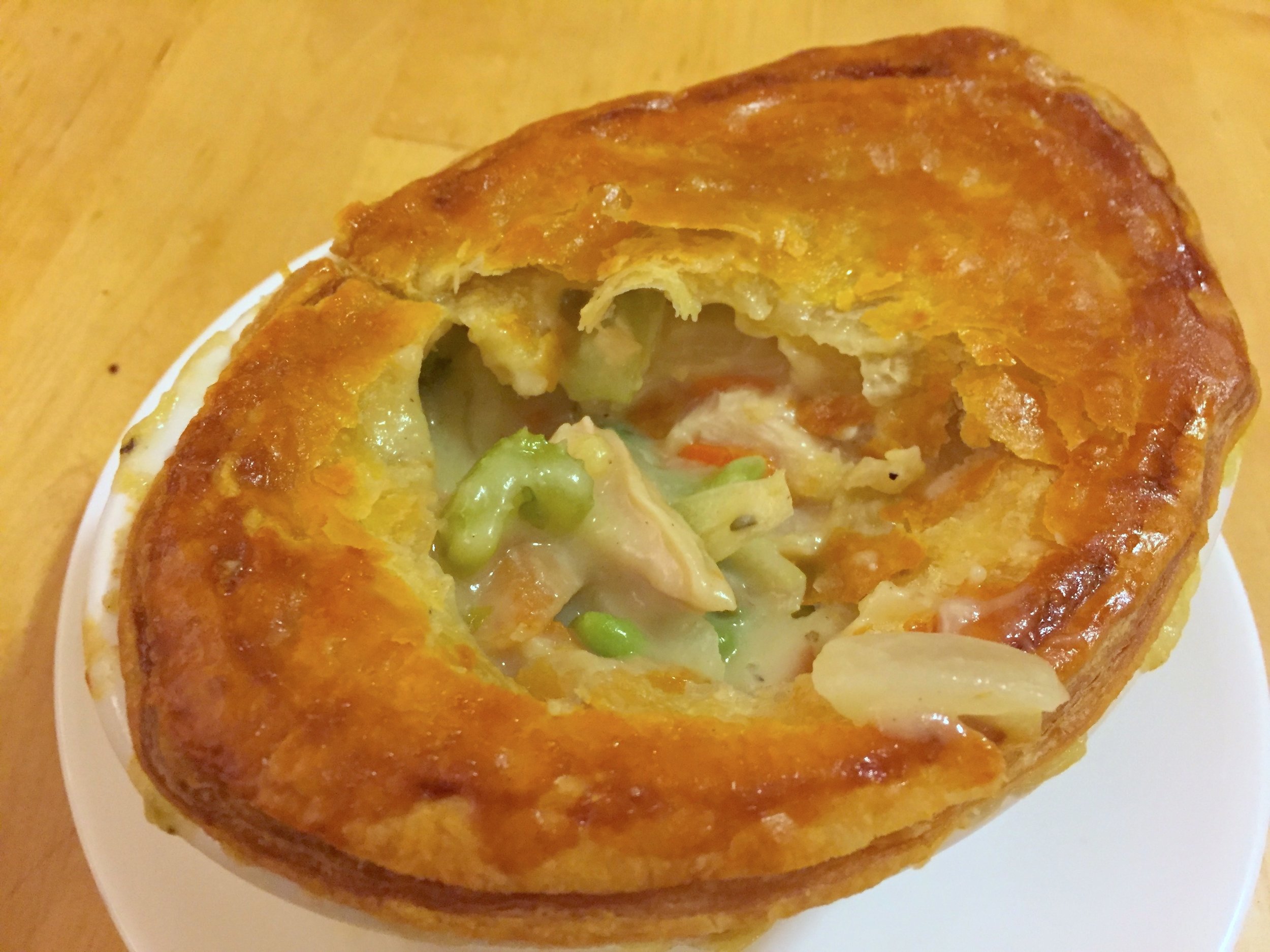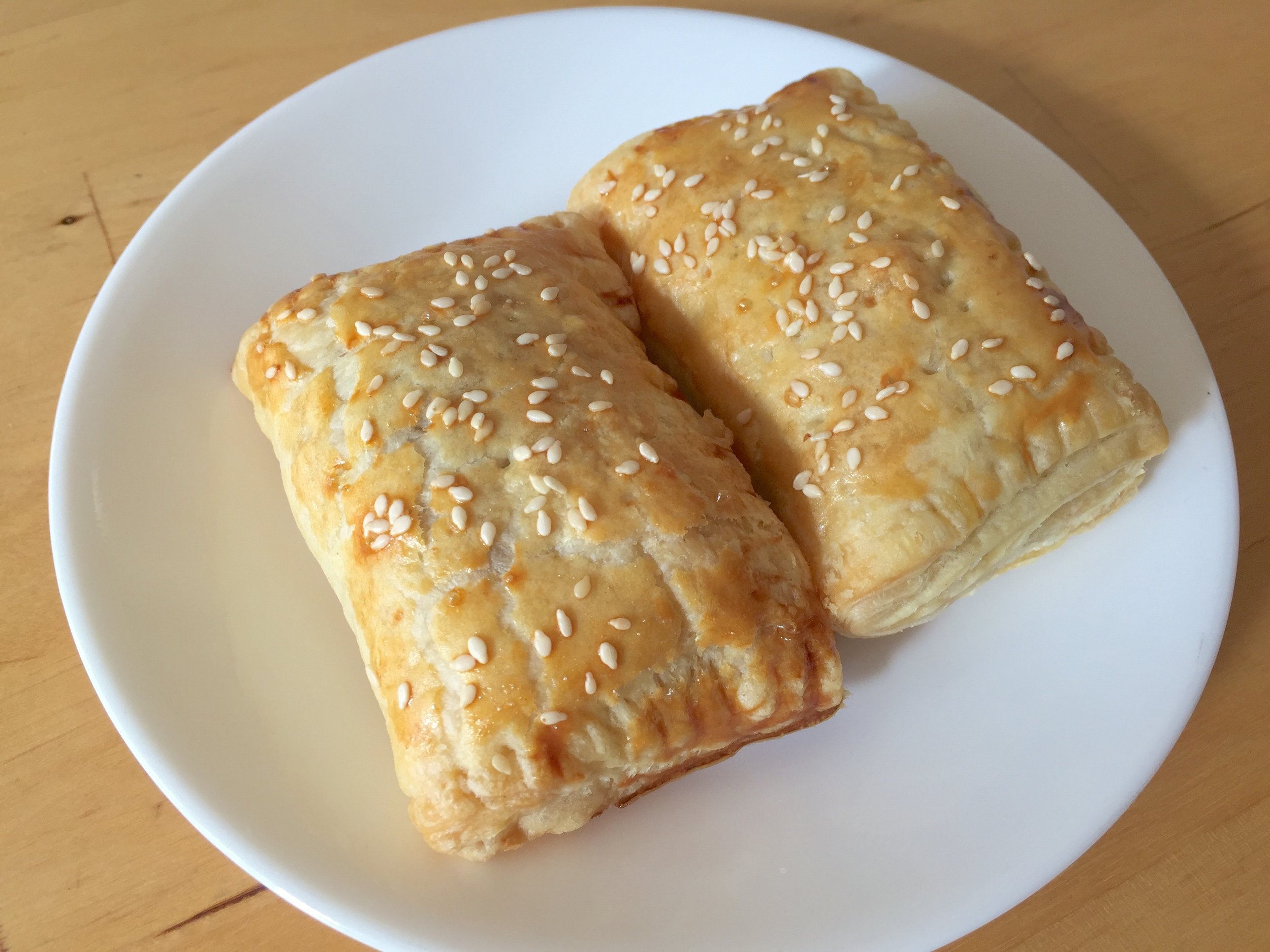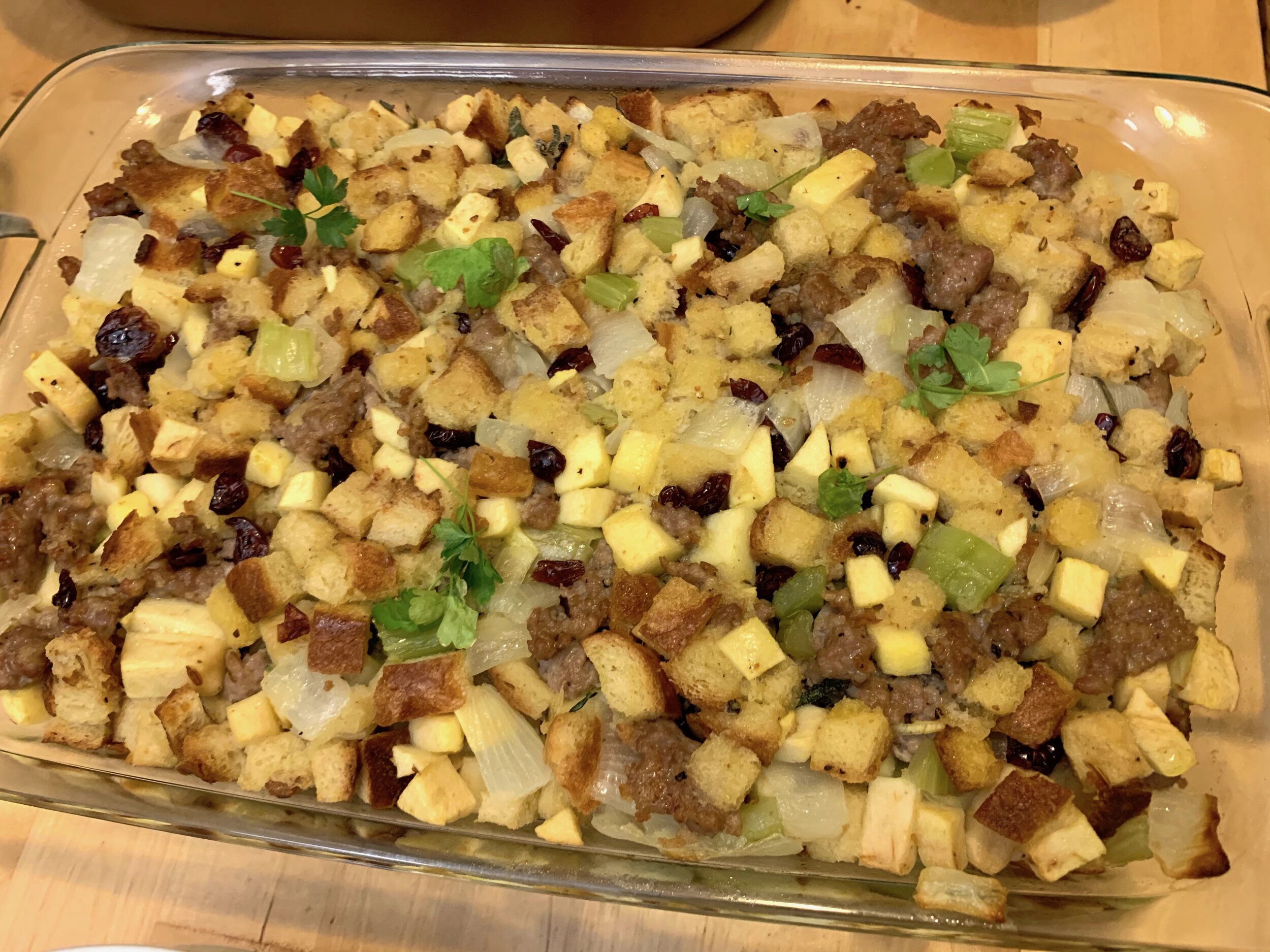Quiche Lorraine

A common sight at cafés and bakeries, quiche is a savory egg custard pie, often filled with meat or vegetables. Quiche is widely considered a French food, though some claim that its origins are German.[1] Which is it? Well, neither, really. Quiche originated in Lorraine in the Middle Ages, when it was an independent duchy. The original Lorraine version contained just eggs, dairy, and bacon, with cheese and onions added to the recipe later. So why is this dish claimed by both the French and the Germans? Because Lorraine itself has been claimed by both the French and the Germans.
The modern extent of Lorraine, currently part of the Grand Est administrative region of France.
A region inhabited historically by a diverse mix of peoples, Lorraine’s strategic location made it the ideal place for the empires of Europe settle their differences. While the Duchy managed to maintain their independence for many years through a series of powerful alliances, Lorraine suffered immensely during the Thirty Years’ War, which saw their ally, the Holy Roman Empire, decisively defeated by a resurgent France. The balance of power in Western Europe had shifted, and France annexed Lorraine by force of arms in 1766. A century later, France’s defeat in the Franco-Prussian War led to the loss of the region to Bismarck’s newly formed German Empire. The loss of Lorraine to the Germans was a national humiliation in France, and led to the birth of revanchism, a political movement demanding revenge against Germany and the desire for another war to reclaim the lost territories.
Historians attribute the eagerness with which France entered the First World War in large part to this desire to reclaim Lorraine, together with the province of Alsace. The eventual Allied victory led to Lorraine being returned to France as part of the Treaty of Versailles, but German resentment at the loss of the territory contributed to the eventual breaking of the peace. Once again, Europe was at war. The invasion of France in 1940 saw Lorraine once again fall into German hands, followed soon after by the occupation of all of Northern France. Lorraine again became a symbol of patriotic resistance for the French—for the duration of the Second World War the Free French forces flew the cross of Lorraine on their flag.[2] With the defeat of the Nazis, Lorraine was returned to France, which holds administrative control to this day. However, public demonstrations for greater autonomy from France in the once-independent region continue into the 21st century.
So to answer the question, it’s probably most accurate to say that quiche is a dish that is part of French cuisine in the present day, and did originate in a region which is now part of France, but it did not originate in France, and which contains both French and Germanic culinary influences. Anyway, that’s enough history for today. Let us take a look at that grandfather of all quiches, the quiche Lorraine.
Ingredients
1 pie crust (9”)
6 eggs
1 cup milk
1 cup gruyere cheese, grated
5 slices bacon, diced
1 onion, diced
2 scallions, chopped (optional)
salt to taste
black pepper to taste
We will be using a nine-inch pie or tart crust for this recipe, either store-bought or homemade. It is important to blind bake the crust of a quiche, to ensure that the dough cooks properly. If we fail to blind bake, the egg will soak into the crust before it is fully cooked, preventing it from crisping as effectively. Preheat the oven to 425° F, and dock the crust with a fork, to help prevent bubbles from forming during the blind bake. If you have baking weights, use them here, though with sufficient docking weights are not absolutely necessary. Once the oven is up to temperature, bake until the dough is no longer raw, about 5-10 minutes. Remove the blind baked pastry from the oven and reduce the temperature to 375° F.
Meanwhile, let us prepare our other ingredients. We will be cutting the bacon into small crosswise strips about a centimeter in width, each piece containing a portion of lean meat and a portion of fat. Pieces of bacon cut like this are known as lardons.[3] Chilling the bacon briefly in the freezer prior to cutting it will make this process much easier. Place the bacon in a cold skillet and heat it on low, slowly cooking the bacon and allowing the fat to render. Continue cooking, stirring occasionally, until most of the fat has rendered out and the bacon pieces start to brown, which should take about 10 minutes.
When this stage is reached, drain most of the rendered bacon fat, leaving approximately 1 tablespoon in the pan. Add the diced onion to the skillet and increase the heat to medium. Season with salt and pepper, and cook for 10 more minutes, until the onions are softened. It is important to cook out the onions before placing them into the quiche, as excess moisture in the filling can prevent the custard from setting properly.
Because we want the eggs to set as a custard and not curdle, it is important that the other two components, the crust and the filling, have some time to cool before we assemble the pie. We can get away with warm, but not piping hot. While they are cooling, grate your cheese and prepare the egg mixture, beating six eggs with a cup of milk until homogeneous.
When it comes to assembly, I prefer to layer my ingredients in the pie rather than mixing them with the egg. Layering gives us much more control over the amount and distribution of ingredients. Place the empty pie crust on a sheet pan lined with tinfoil. The sheet pan will help avoid an oven cleanup in the event of a spill or leak. I like to do two layers each of cheese and filling, alternating between the gruyere and the bacon and onions. If you are using scallions, distribute them amongst the layers as well. Resist the urge to pack the filling in—in order for the egg to set around the other ingredients and bind the quiche effectively, we want the filling at this stage to be rather loose.
Once the filling is assembled, it is time for the egg mixture. I prefer to use a ladle to do this, which gives me more control of the amount of egg going into the quiche, and where its flowing. Fill the pie until the egg comes to within half a cm or so of the edge of the crust. Depending on the size of your crust and the amount of filling you have, you may have a small amount of egg mixture left over. Don’t try to force the issue by overfilling the pie.
Bake the quiche on the lowest rack of your oven at 375° F. It is important to bake quiche on the lowest rack because in most ovens, the heat during baking comes from the heating element in the bottom of the unit. Placing the quiche as close as possible to this heat gives the crust a fighting chance of crisping before the egg soaks through.
Now comes the final challenge to quiche making—when to pull the pie from the oven. Egg custard has a very narrow window of proper doneness, when it is no longer raw and still silky in texture. The simplest way to test for doneness is to jiggle the pie slightly—if the egg at the edges is set but the center is still wobbly, it’s time to pull the quiche from the oven. This should take about 30 minutes, but cook time will vary depending on the size of your pie crust and your oven. Even out of the oven, the custard will continue to cook gently due to carryover heat, so the quiche needs to rest for at least 15 minutes (ideally closer to 30 minutes) before slicing.
Quiche can be served warm or at room temperature, and also refrigerates reasonably well. However, refrigerating quiche tends to have detrimental effects on the crispness of the pastry, as moisture inevitably moves in. To minimize these effects, reheat refrigerated quiche in the oven when possible.
Substitutions
Quiche Lorraine in France is often made with French lardons, which are cured but not smoked. As such, American bacon is often an imperfect substitute for lardons in French cooking. However, in Lorraine they do smoke their bacon, so we’re okay for this recipe! If you’d like to use a different protein, diced ham works well in place of bacon. Cook off the ham with the onions in a small amount of vegetable oil to make the filling.
Most reasonably mild hard cheeses which melt well can be substituted for gruyere in this recipe. Swiss cheese is a good substitute, as is Colby cheese. Some less traditional alternatives include cheddar cheese (especially common in quiches made in the UK) and low-moisture mozzarella cheese. For a richer custard, you can substitute cream for milk.
[1] The word quiche is likely derived from the German “kuchen,” meaning cake or tart.
[2] Classic film fans will remember the appearance of the cross of Lorraine as a symbol of the French Resistance in “Casablanca,” set in 1941 Vichy Morocco.
[3] At least in the English-speaking culinary tradition. In the original French lardons refer to long strips of chilled pork or fat used for “larding” lean pieces of meat. However, the English usage has since trickled back into France as well. In most cases though, it is immediately obvious based on the context of a recipe which type of lardon is being referred to, so this double meaning is not usually a problem.
Recipe
Prep Time: 10 min Cook Time: 50 min Total Time: 1 hr
Difficulty: 2/5
Heat Sources: oven, 1 burner
Equipment: skillet, sheet pan
Servings: 6
Ingredients
1 pie crust (9”)
6 eggs
1 cup milk
1 cup gruyere cheese, grated
5 slices bacon, diced
1 onion, diced
2 scallions, chopped (optional)
salt to taste
black pepper to taste
Instructions
1. Preheat the oven to 425° F and dock the pie crust with a fork. When the oven comes to temperature, blind bake the crust until no longer raw, 5-10 minutes. Remove the crust from the oven and let cool, and reset the oven to 375° F.
2. Meanwhile, cook the diced bacon in a skillet over low heat until it has rendered most of its fat and is starting to color, 10 minutes. Drain all but 1 tbsp of the bacon fat from the pan.
3. Add the onions to the skillet and turn the heat up to medium. Season with salt and pepper and cook, stirring occasionally, until the onions soften, about 10 minutes.
4. Beat together the eggs and milk, and set aside.
5. Build the quiche by layering cheese, the bacon and onion mixture, and scallions in the pie crust. Ladle in the egg mixture until the crust is filled.
6. Bake at 375° F on the lowest rack of the oven until the custard is just set, about 30 minutes.
7. Let rest for at least 15 minutes before slicing and serving.
























